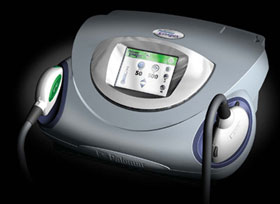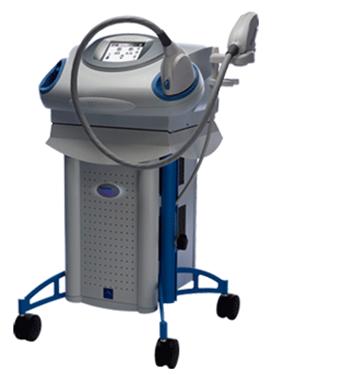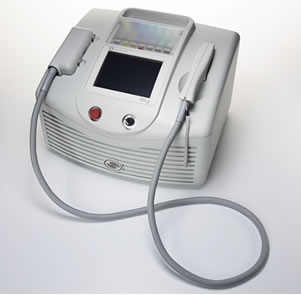The goal of negotiating for a new medical laser is to try to get the largest possible discount off the laser manufacture’s “List price.” The list price is what a manufacturer, such as Alma Lasers or Palomar Medical, posts as the selling price. You’ll see the manufacturer’s suggested list price in many of the trade magazines such as the Aesthetic Buyers Guide or at Aesthetic Trade Shows. This is a price that is not commonly paid by most doctors, however there are many physicians who don’t like to negotiate and accept the list price as the final price. Unfortunately, they end up losing thousands of dollars in the process and even more money down the road when they try to resell it. I’ll get to how this happens a little later.
Obviously, before you even start negotiating, you need to decide which medical laser(s) you want to buy. So take the time to investigate what you’re looking for, request the manufacturers to demo their equipment in your clinic. Attend the various laser conferences and do your own research. Ask your more experienced colleagues what laser systems they have used and which ones they recommend. If you’re not part of some of the laser societies, I would strongly recommend that you join some of these organizations. A great one that I like is the American Society for Laser Medicine and Surgery (ASLMS.org). The networking aspect is tremendous and you will get invaluable user feedback on all of the major laser systems out there. Walk the floor of the trade booths and don’t be afraid to ask questions.
Try to become as knowledgeable as possible regarding laser biophysics so that you don’t get “bamboozled” by the slick “laser-techno-babble” of the sales reps. During this initial demo phase inside your clinic, never promise anything to a salesperson, never give a deposit, and never sign any type of contract. Don’t feel pressured either — if you do, inform the salesperson that you never buy any equipment on the first visit to your office.
You need to be sure that your sales reps know that you are looking at many different laser manufacturers. If they get the slightest idea that you really only want their equipment (even if you do), you have lost considerable leverage when it comes time to negotiate. You should also get comparative price quotes of each model you are testing. You can use this pricing to your advantage by having each sales rep bidding against each other on price.
You have to think outside of the box to get a good discount. The worst thing you can do is negotiate a price without having any information on the TRUE sales price. So, how do you get the true sales price? Ask for references from the sales rep in your area of other doctors he has sold to. Once you have this information, it is important that you call these doctors and ask them about their level of satisfaction with the equipment as well as how much they paid for their system. This may seem a little crass to ask for this type of information from a total stranger, however it’s your money and you could be saving thousands of dollars by doing so.
You may also know other associates who own this equipment. If you’re able to get accurate sales price information, you can use this as leverage when you are presented with an offer. The sad reality is this, whatever you pay for a new system, all new medical lasers typically depreciate by at least 40 to 50% as soon as they are sold. Even if you buy a new medical laser and never use it, it still loses at least 40% of its original value.
Why does this happen? It doesn’t really seem possible or fair does it? There are critical reasons for this and it is not by accident. One of the main reasons is that most laser manufacturers do not allow the original one year warranty to be transferred to another buyer. If you want to sell a laser you just purchased, the original warranty is voided because it is typically non-transferrable. Most doctors who are buying their first laser do not know this, and they naively sign the purchase agreement with these clauses contained in the agreement. In addition, the new buyer will need to pay a “recertification fee” to the manufacturer in order to get the laser serviced by the manufacturer.
As if that’s not painful enough, the “recertification fee” doesn’t include the warranty. The new buyer has to also purchase an entirely NEW warranty if they want the laser serviced by the manufacturer because the last warranty was just voided due to the transfer of ownership! What a racket huh? Whether these practices by the manufacturers are truly legal is highly questionable, however the sad reality is this is the standard practice inside the medical laser industry. All of this gets very expensive very quickly! In some cases, the recertification fee is in upwards of $25,000 plus a new warranty of around $10,000 = $35,000 TOTAL – just because the laser changed ownership. These extra fees charged by the manufacturer cause the value of the equipment to plummet!
Unfortunately, most doctors don’t realize this until after they’ve already bought their laser and it comes time to sell their equipment. How do you avoid this? First of all, I would highly recommend that you have your attorney review any purchase agreement you are being asked to sign before you sign it. He or she will be able to detect any clauses that are oppressive or unfair and will give you recommendations on what clauses should be revised or deleted.
This is probably the most important paragraph I am placing in this article. Please read and re-read this paragraph because it is so critically important and can save you thousands of dollars. You need to enter the purchase negotiations for a new medical laser with the goal of accomplishing these four objectives: (1) Revise the purchase agreement to allow the warranty to be transferred to a new buyer without penalties or fees of any kind, (2) Request that the warranty be extended beyond the standard one year to two or three years, (3) Eliminate any language in the agreement regarding a “recertification fee” should the laser be sold beyond the warranty period, and (4) require that the warranty include a Laser Depot service to be sure you have no downtime in your clinic. A laser depot service is when the manufacturer ships you a replacement laser should your laser break down during the warranty period. It is a critical service to have when you have just purchased a new laser. Be sure this is always included. If you can, request that the Depot service is extended through the entire life of the warranty, whether it be one year or up to three years. If you are able to accomplish these four objectives, you will be way ahead of the game.
Changing the purchase contract so that the warranty can be transferred without penalty will dramatically help you sell your laser down the road, should you choose to do so. It will also help increase the laser’s resale value and how much money ends up in your pocket. Requesting that the warranty be extended beyond a standard one year is another key strategy to help you maintain your laser and ensures that you don’t incur expensive repairs after the first year of use.
Most medical laser malfunctions and breakdowns occur after the first year of ownership, so extending the warranty to two or three years will ensure you don’t incur expensive repairs during this period. Recertification fees are the manufacturers way of leveling the playing field when competing against their own used medical lasers in the used marketplace. By having a “recertification fee” of $10,000 to $25,000, it closes the gap between the cost of a new laser versus a new one. Quite frankly they are ridiculous fees and I don’t believe they are legal, but no one has challenged the manufacturers in this area to my knowledge. What if an automobile manufacturer were to charge such bogus fees? The public would revolt! I’m not sure why it’s tolerated in the medical community.
Keep in mind that you have the greatest leverage in the negotiation process before you buy. You can never get what you don’t ask for, so ask for it! You will be surprised with the sales rep says yes to. If you are a qualified buyer, there aren’t many of you around, especially for new medical lasers! You need to exploit this fact to your greatest advantage. The strongest arrow in your quiver is your ability to “walk away” from any deal. The sales reps don’t want this to happen and they will do anything in their power to avoid this! If you do walk away, you can typically buy the exact same system on the used market for much, much less – up to 60 to 70% off! In most cases, all of this equipment can be serviced by third party repair companies without going through the manufacturer, so who needs em! If you are reading this, you obviously have access to the Internet.
Take advantage of that and inform yourself by surfing the Web. One of the most important steps you can take is to see what your laser is selling for on the used market. A good place to start is www.Dotmed.com. This is a very large Internet Portal connecting buyers and sellers of all used medical equipment.
Key word: DEMO UNIT. Often times you can secure a very good price on a “new” medical laser by asking if they have any “demo” units available. A “Demo Unit” is often times a new piece of equipment, however by calling it a “demo” unit it allows the manufacturer to “save face” and dramatically drop their sales price below the acceptable range. Most of the time if the laser is actually used, it has been used very lightly and the manufacturer still carriers at least a six month to one year warranty on the unit.
Once you’ve tested a medical laser inside your clinic, there is no need for the sales rep to return except to sign a contract. Try to maintain negotiations on the phone or by email — you will be less intimidated and less likely to falter to pressure. Some sales reps/manufacturers refuse to give you a price on the phone. Inform them that you are serious about buying and will do so quickly if offered a good price.
Make sure the final price is the final price: Compare apples with apples. Have all taxes and fees included in the final quote. Ask them, “If I were to buy this medical laser outright, and had to get a certified check, what would the amount on the check say?”
Remember that in the end, you end up with a new medical laser at a lower cost. Saving money is never a wasted effort. In addition, when it comes time to sell your medical laser, your equipment will have a higher resell value if your contract allows a transfer of the warranty and no “recertification fees!”
 One of the most common questions that other physicians ask me is “how do I incorporate lasers into my surgical practice?”
One of the most common questions that other physicians ask me is “how do I incorporate lasers into my surgical practice?”











